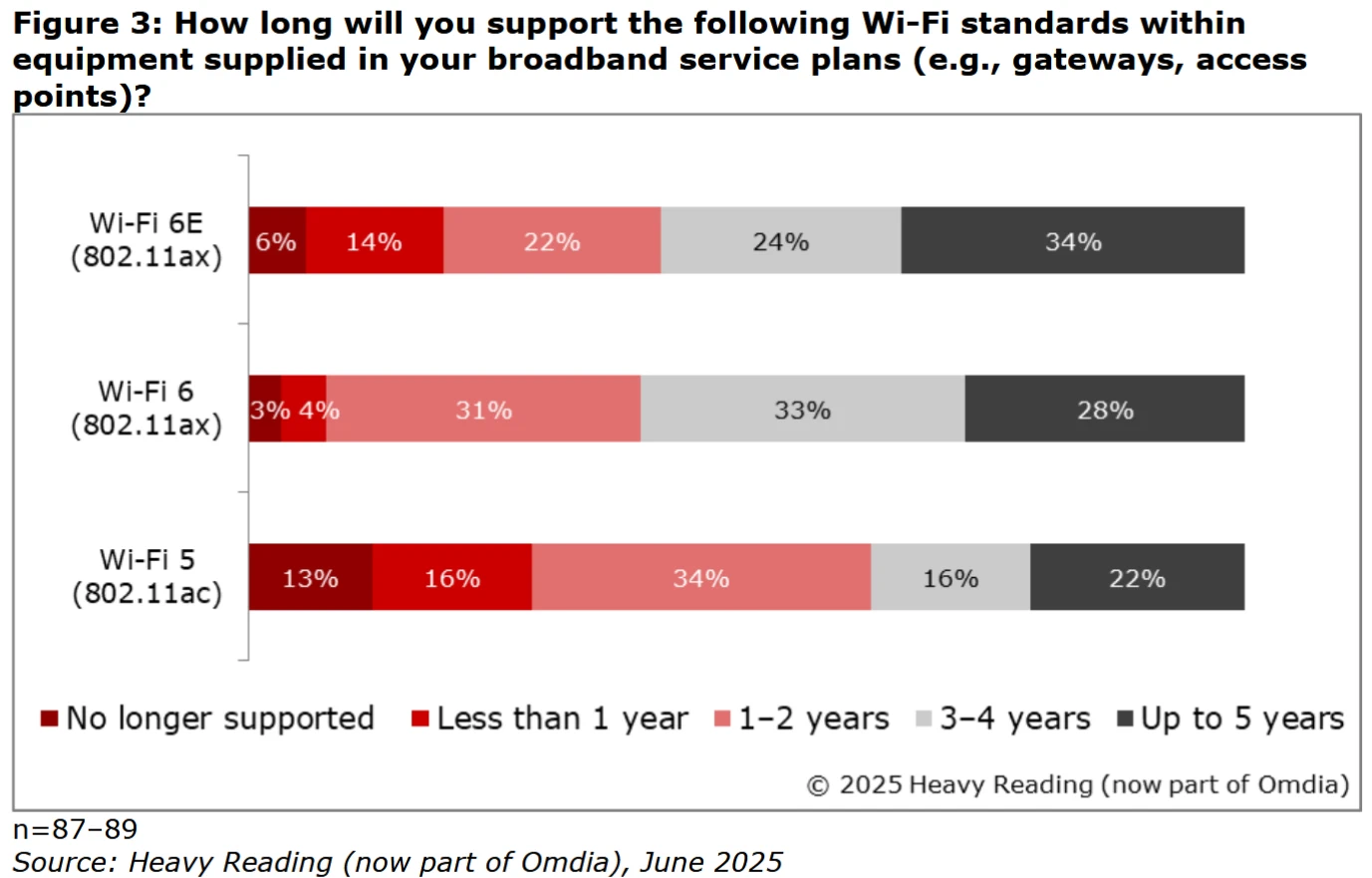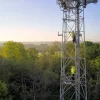New Survey Claims 50 Percent of Broadband ISPs to Adopt WiFi 7 Within 12 Months

A new survey of 90 global internet providers, which was conducted by Heavy Reading (Omdia), in collaboration with eero (Amazon) and Qualcomm Technologies, claims that more than 50% of ISPs have already deployed or expect to deploy WiFi 7 based service plans within 12 months. Part of this is to support the roll-out of multi-gigabit speed packages, said to be growing at 20.5% a year (CAGR).
In terms of what the ISPs currently support. A combined 63% of global service providers indicate Wi-Fi 5 is no longer supported or will only be for up to 2 years. Of all respondents, 16% will continue support for “3–4 years” and 22% “up to 5 years.” By comparison, 38% of respondents expect to support Wi-Fi 6 for up to 2 years.

Advertisement
Faster broadband speeds (61%) are said to remain the top driver for Wi-Fi upgrades to newer technologies like WiFi 7, with “Quality of experience/user experience” (48%) and “lower latency” (47%) following close behind. Not to mention that the most frequently reported customer concern related to ISP supplied Wi-Fi kit is “poor indoor coverage/dead zones” – 61% of respondents commonly recommend using a multi-device wireless architecture (based on a combined group recommending Wi-Fi extenders (33%) and mesh systems (28%)).
Additional Survey Highlights
➤ A combined group of 66% of respondents for business connectivity and 59% for consumer use consider Tri-band frequency support in Wi-Fi 7 (2.4GHz, 5GHz and 6GHz) to be extremely important or important for their connectivity offerings.
➤ 94% of ISPs currently offer, or plan to deploy, multi-link operation (MLO) – a key performance boosting feature of WiFi 7.
➤ Security and safety features (67%) are the top software priority for service providers when selecting Wi-Fi equipment. Device and real-time service optimization (54%), internet backup (29%), and the ability to sell value-added services, including third-party subscriptions (28%), follow behind.
➤ Automated troubleshooting (28%) and network optimisation (26%) are the top use cases for AI-based Wi-Fi network management. Predictive management (16%) and configuration management (15%) follow behind.
The catch in all of this is that Wi-Fi 7 is still more of a premium market feature, with most ISPs maintaining a mixed estate of Wi-Fi generations across their installed base. However, vendors are starting to introduce more affordable, entry-level products to make this technology more accessible, just as they always do.
The full Wi-Fi 7 Operator Survey can be accessed via the ISPA’s website (here), although we would have preferred to see the results for a survey that only focused on UK based broadband providers. Naturally eero also has a vested interest in plugging adoption of the latest router technologies.
Mark is a professional technology writer, IT consultant and computer engineer from Dorset (England), he also founded ISPreview in 1999 and enjoys analysing the latest telecoms and broadband developments. Find me on X (Twitter), Mastodon, Facebook, BlueSky, Threads.net and Linkedin.
« Openreach Expand Project Gigabit Broadband Builds in Devon and Somerset UK
Advertisement
Leave a Reply Cancel reply
Privacy Notice: Please note that news comments are anonymous, which means that we do NOT require you to enter any real personal details to post a message and display names can be almost anything you like (provided they do not contain offensive language or impersonate a real person�s legal name). By clicking to submit a post you agree to storing your entries for comment content, display name, IP and email in our database, for as long as the post remains live.
Only the submitted name and comment will be displayed in public, while the rest will be kept private (we will never share this outside of ISPreview, regardless of whether the data is real or fake). This comment system uses submitted IP, email and website address data to spot abuse and spammers. All data is transferred via an encrypted (https secure) session.





















































There is an awful lot of people out there who still use older PCs/laptops which aren’t WiFi 6 compatible, let alone WiFi 7. Every day I have a conversation with some of them. It is not hyperbolic to suggest that a transition to an all-7 future will be more disruptive to society as a whole that the PSTN switch off is.
Even the overpriced eero 7 is backwards compatible, it would lose them a lot of sale if it was not, so just because the router is Wi-fi 7,, don’t mean it will not work with older stuff. The majority of smart home stuff still run on the 2.4Ghz band, I presume because it is more reliable and will go through walls that 5Ghz have problems with and the majority of smart home devices don’t need super-duper speed. A smart plug will just send a signal to say if it is on or off, even my doobell camera and blink cameras run on 2.4Ghz and they are fine.
So new Wi-Fi 7 routers will still support the older tech for a long time.
As for Wi-Fi 7 itself, There are two versions type of thing, cheaper routers that say they are Wi-Fi 7 seems to be on 5Ghz, while the more expensive ones use 6Ghz for Wi-Fi 7 from what I have been reading.
I am in no rush to update as long as my router keeps going, if I do update my router, then I may think about making one, just for the fun of it.
@AD47UK
Wifi6E routers use 6ghz band as well. I think this was when 6ghz was introduced.
It is quite hyperbolic really – WiFi7 routers work just fine with older kit. How is that disruptive in any way?
I have a growing number of devices that support it now. So it’ll soon be time to upgrade my UniFi access points to the Wi-Fi 7 versions, which are actually quite reasonably priced. And they have 2.5GBe POE ports, so next I can look at upgrading to a 2.5GBe switch, and onwards it goes! Admittedly all fairly pointless when our fibre connection is at 160/30Mbps, because that’s enough for now…